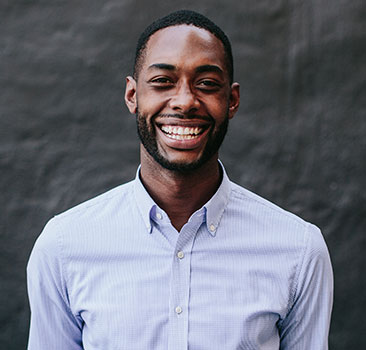
Nathan Alexander
Morehouse College
|
NAM Cox-Talbot Lecture
Histories of African Americans connecting mathematics and society
Friday January 6, 2023, 7:45 p.m.-8:35 p.m.
The world often looks to philosophy and the social sciences as opposed to the mathematical sciences to discuss and explore topics related to equity, collective action, and justice. Since the late 19th and early 20th century, however, African American scholars have taken social theories, which are strong in intuitive content, and expressed them in more formal terms using mathematics and data. Despite recent advances in discourses at the intersections of mathematics and social justice, the narratives and legacies of many of these African Americans who used mathematics to understand society, especially in the American South, have been lost. In addition to a discursive approach to their historical contributions, this invited talk will explore the formal mathematical foundations of models used by African Americans to examine inequities in history with the intention of developing more just futures. More specifically, this talk will connect the intuitive aspects of a global experience to understand the means through which mathematics served as an integral tool for African Americans to not only speak to their experiences but also to the logics of democracy, race, and racism.
|
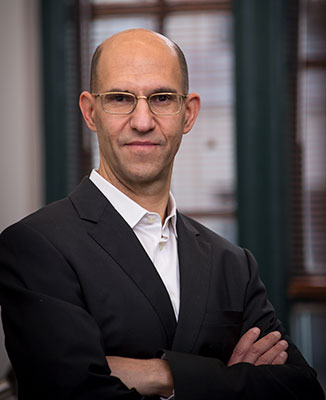
Jeremy Avigad
Carnegie Mellon University
|
ASL Invited Address
The promise of formal mathematics
Saturday January 7, 2023, 10:00 a.m.-10:50 a.m.
Since the early twentieth century, it has been understood that mathematical statements can be expressed in formal languages and that mathematical proofs can be represented in formal deductive systems with precise rules and semantics, at least in principle. Remarkably, the development of computational proof assistants over the last few decades has made it possible to do this in practice. The technology is firmly based on the methods and concepts of modern logic, and in many ways represents the contemporary embodiment of the foundational tradition.
I will give a brief overview of formally verified mathematics and the state of the field today. I will discuss a particular theorem prover, Lean, and its formal library, mathlib, which are attracting a growing community of users. I will explain why the technology is likely to have a transformative effect on mathematics, and I will explain why mathematical logicians might be interested in it.
|
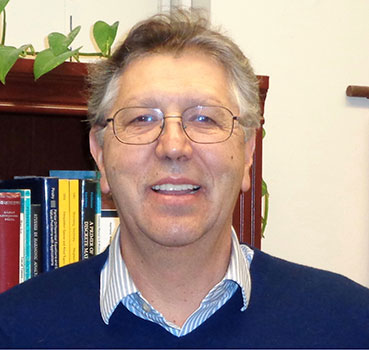
Rodrigo Bañuelos
Purdue University
|
AMS Invited Address
Sharp inequalities in probability and harmonic analysis
Wednesday January 4, 2023, 3:10 p.m.-4:10 p.m.
The interplay between probability and harmonic analysis has a long history that has greatly enriched both fields. The purpose of this talk is to discuss some of this history and illustrate this interplay with some recent applications of probability to new sharp inequalities for classical operators in harmonic analysis in the discrete setting.
The discrete Hilbert transform was introduced by David Hilbert in the first decade of the 20th century who also proved its boundedness on the space of square summable sequences. His proof first appeared in H. Weyl's doctoral dissertation in 1908. In 1925, M. Riesz solved a problem of considerable interest to the analysis community at the time by showing that the continuous version of the Hilbert transform defined on the real line is bounded on the Lebesgue space of p-integrable functions and from this concluded the same for the discrete Hilbert transform on the space of p-summable sequences and showed that in fact the operators have comparable norms. Proving that they have the same norms has been a long–standing open problem motivated in part by an erroneous proof by E. C. Titchmarsh in 1926. Minimizing technicalities and recalling history, we will discuss a solution to this problem based on probabilistic tools that have had many applications in the computation of norms of singular integrals and Fourier multipliers in the continuous setting. Similar problems in the higher dimensional lattice will be mentioned.
|
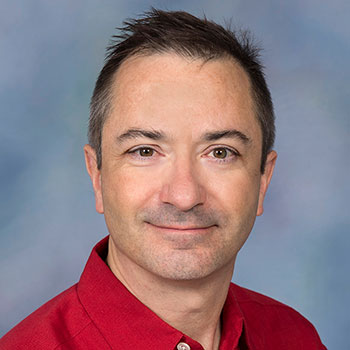
Richard Baraniuk
Rice University
|
AMS Josiah Willard Gibbs Lecture
The mathematics of deep learning
Thursday January 5, 2023, 5:00 p.m.-6:00 p.m.
Over the past decade, deep (neural) networks trained using massive data sets have enabled remarkable progress on a wide range of challenging computational problems, from pattern recognition and image synthesis to language translation and protein folding. Nevertheless, this progress has been alchemistic and driven largely by empirical observations, hacks, and tricks. This talk will overview some of the recent advances made by the mathematics community towards a theory of deep learning based on rigorous mathematical principles. Such a theory aims to provide insights into deep networks’ successes and shortcomings, a principled route to their improvement, and new avenues for exploration. Of the several promising avenues of research, we will focus on the connection between deep networks and spline approximation that provides a geometric interpretation for how deep networks organize and process data.
|
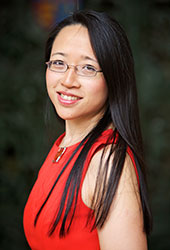
Eugenia Cheng
Photo Credit: RoundTurner Photography.com
School of the Art Institute of Chicago
|
AMS Erdős Memorial Lecture
Associativity, commutativity and units: a higher-dimensional ballet
Wednesday January 4, 2023, 11:10 a.m.-12:00 p.m.
Associativity, commutativity and unit laws are axioms we typically learn about early on, in the context of numbers. We might then take them for granted until we meet non-commutative situations, such as multiplication of matrices, or symmetry groups. In higher dimensions we start to encounter non-associativity and non-unitality as well, but there is more nuance: rather than associativity simply being true or not true, there are shades of grey, where associativity holds up to isomorphism, equivalence, or just some sort of map. In this talk I will describe how those familiar three families of axioms become the essence of all the interesting features of weak higher-dimensional category theory. Moreover, rather than being three different types of axioms they are inextricably related via a higher-dimensional version of distributivity. The ballet they present is one of ebb and flow, give and take, where rigidity for one “dancer” always needs to be offset by flexibility in another. I will show that the apparently mundane maths of high school has deep category theoretical insights embedded in it, if we care to look. I will not assume any prior knowledge of category theory.
|
|
Peter Cholak
University of Notre Dame
|
ASL Invited Address
Ramsey like theorems on the rationals
Friday January 6, 2023, 9:00 a.m.-9:50 a.m.
Let’s color subsets of rationals of size 2 with 496 different colors. Then, it is known, that we can find an isomorphic substructure of the rationals where only 2 colors appear (among these pairs of rationals). In fact, if we color subsets of the rationals of size n with 496 colors we can find isomorphic substructures of the rationals where the number of colors appear is exactly the nth odd tangent number. So the rationals have finite big Ramsey degree. We will explore some other structures which have finite big Ramsey degree. Milliken's tree theorem plays a large role in showing these results.
|
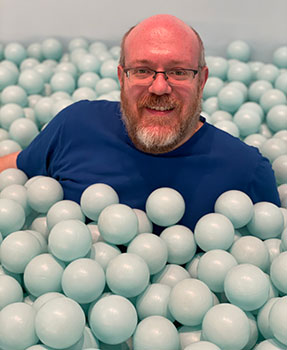
Henry Cohn
Massachusetts Institute of Technology
|
Current Events Bulletin Session - Lecture III
From sphere packing to Fourier interpolation
Friday January 6, 2023, 4:00 p.m.-5:00 p.m.
In this talk, I’ll report on the work that earned Maryna Viazovska a Fields medal in 2022. Her ideas start with a remarkable use of modular forms to solve the sphere packing problem in eight dimensions, and then lead to a new theory of interpolation for a function and its Fourier transform.
|
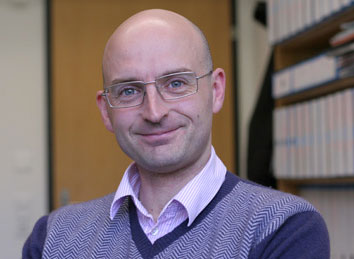
Camillo De Lellis
Institute for Advanced Study
|
AMS Colloquium Lectures: Lecture I
Flows of nonsmooth vector fields
Wednesday January 4, 2023, 1:00 p.m. - 1:50 p.m.
Consider a vector field $v$ on the Euclidean space. The classical Cauchy- Lipschitz (also named Picard-Lindelöf) Theorem states that, if the vector field is Lipschitz in space, for every initial datum $x$ there is a unique trajectory starting at $x$ at time 0 and solving the ODE $\dot\gamma(t) = v(t, \gamma(t))$. The theorem loses its validity as soon as $v$ is slightly less regular. However, if we bundle all trajectories into a global map allowing $x$ to vary, a celebrated theory started by DiPerna and Lions in the 80s show that there is a unique such flow under very reasonable conditions and for much less regular vector fields. This theory has a lot of repercussions to several important partial differential equations where the idea of “following the trajectories of particles" plays a fundamental role.
In my lectures I will review the state of the development and the state of the art of the subject, touching upon a variety of related topics, such as the most recent surprising outcomes of convex-integration techniques and the most interesting applications to evolutionary PDEs.
|
| |
AMS Colloquium Lectures: Lecture II
Flows of nonsmooth vector fields
Thursday January 5, 2023, 1:00 p.m. - 1:50 p.m.
Consider a vector field $v$ on the Euclidean space. The classical Cauchy- Lipschitz (also named Picard-Lindelöf) Theorem states that, if the vector field is Lipschitz in space, for every initial datum $x$ there is a unique trajectory starting at $x$ at time 0 and solving the ODE $\dot\gamma(t) = v(t, \gamma(t))$. The theorem loses its validity as soon as $v$ is slightly less regular. However, if we bundle all trajectories into a global map allowing $x$ to vary, a celebrated theory started by DiPerna and Lions in the 80s show that there is a unique such flow under very reasonable conditions and for much less regular vector fields. This theory has a lot of repercussions to several important partial differential equations where the idea of “following the trajectories of particles" plays a fundamental role.
In my lectures I will review the state of the development and the state of the art of the subject, touching upon a variety of related topics, such as the most recent surprising outcomes of convex-integration techniques and the most interesting applications to evolutionary PDEs.
|
| |
AMS Colloquium Lectures: Lecture III
Flows of nonsmooth vector fields
Friday January 6, 2023, 1:00 p.m. - 1:50 p.m.
Consider a vector field $v$ on the Euclidean space. The classical Cauchy- Lipschitz (also named Picard-Lindelöf) Theorem states that, if the vector field is Lipschitz in space, for every initial datum $x$ there is a unique trajectory starting at $x$ at time 0 and solving the ODE $\dot\gamma(t) = v(t, \gamma(t))$. The theorem loses its validity as soon as $v$ is slightly less regular. However, if we bundle all trajectories into a global map allowing $x$ to vary, a celebrated theory started by DiPerna and Lions in the 80s show that there is a unique such flow under very reasonable conditions and for much less regular vector fields. This theory has a lot of repercussions to several important partial differential equations where the idea of “following the trajectories of particles" plays a fundamental role.
In my lectures I will review the state of the development and the state of the art of the subject, touching upon a variety of related topics, such as the most recent surprising outcomes of convex-integration techniques and the most interesting applications to evolutionary PDEs.
|
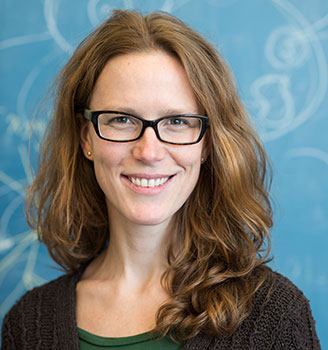
Laura DeMarco
Harvard University
|
AWM-AMS Noether Lecture
Rigidity and uniformity in algebraic dynamics
Thursday January 5, 2023, 10:05 a.m.-10:55 a.m.
The periodic orbits and their structure are fundamental features of a dynamical system. In an algebraic setting, where the system is defined by polynomials, we can use tools from algebraic or arithmetic geometry to study these orbits. Important examples come from the study of abelian varieties, but already the setting of polynomials of one variable is a challenge. In this talk, I will describe some open questions and recent progress on families of complex and arithmetic dynamical systems.
|
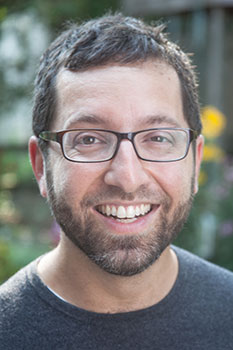
Jordan Ellenberg
University of Wisconsin–Madison
|
JPBM Communications Award Lecture
Outward-facing mathematics
Saturday January 7, 2023, 10:05 a.m.-11:05 a.m.
Are we happy with the way mathematics and mathematicians are presented in the media? What if mathematicians and math educators had more options to tell our own stories about math directly? I’ll talk about about my own experience accidentally building up a sideline writing newspaper articles and books on mathematical topics, and about a writers’ workshop I ran in spring 2022 for early-career scientists, and what I learned there about the academic habits we have to unlearn if we’re going to write for an audience outside our own circle. And I’ll just generally make a pitch for outward-facing mathematics as a valuable and viable part of a career in math research or math education.
|
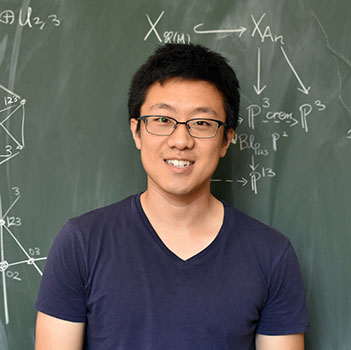
Christopher Eur
Harvard University
|
Current Events Bulletin Session - Lecture II
An essence of independence: recent works of June Huh on combinatorics and Hodge theory
Friday January 6, 2023, 3:00 p.m.-4:00 p.m.
Matroids are combinatorial abstractions of independence, a ubiquitous notion that pervades many branches of mathematics. Recently, June Huh and his collaborators made breakthroughs in matroid theory by establishing combinatorial analogues of concepts from Hodge theory. We survey the results and the ideas from this recent development, as well as their implications to contexts beyond matroid theory.
|
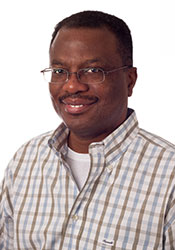
Wilfrid Gangbo
UCLA
|
AMS Invited Address
Recent progress on master equations in mean field games
Wednesday January 4, 2023, 2:05 p.m.-3:05 p.m.
Mean Field Games were independently introduced by Lasry--Lions, and by Huang--Caines--Malhamé, to study strategic decision making by small interacting agents in very large populations. The master equation is a Hamilton--Jacobi equation on the set of probability measures, which encapsulates all the game information, but its non-local nature makes a well--posedness theory a challenge, unless a monotonicity condition is satisfied by the data. The first successful condition was the so-called Lasry--Lions monotonicity condition. To handle non--separable Hamiltonians, we introduce an alternative condition which we term displacement monotonicity. The latter condition allows to also handle games which are either only deterministic or games where only the common noise is present. (This talk is based on works in collaboration with M. Bansil, A. Meszaros, C. Mou and J. Zhang).
|
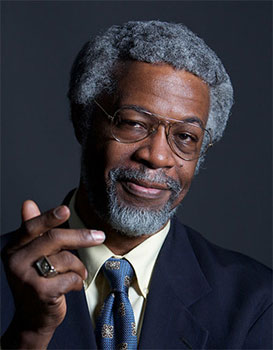
Sylvester James Gates, Jr.
University of Maryland and Past President of American Physical Society
|
*****CANCELLED*****TPSE Invited Address
What challenges does data science present to mathematics education?
Thursday January 5, 2023, 9:50 a.m.-10:40 a.m.
The importance of data science is increasing so rapidly that mathematically based education is facing a challenge to effectively engage this issue. The presentation will discuss these community challenges.
|
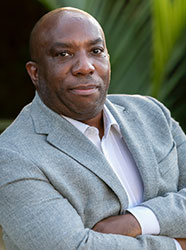
Edray Herber Goins
Pomona College
|
PME J. Sutherland Frame Lecture
Distance makes the math grow deeper: rational distance sets, Nate Dean, and Me
Wednesday January 4, 2023, 5:00 p.m.-5:50 p.m.
Consider the three points in the plane: (0,0), (3,0), and (3,4). They form a 3-4-5 triangle; that is, they form a set whose pairwise distances between them are integers. Paul Erdős and Norman Anning showed in 1945 that for any integer $n$ at least 3, there is a collection of $n$ points not all lying on a line such that their pairwise distances are integers. Stanisław Ulam wondered the very next year what types of shapes one could draw if each pair of points had to be at a rational distance. He quickly realized that certain circles would be dense with such points! In 2000, Nate Dean asked: “Is it possible to find four points on the parabola $y = x^2$ such that each pair of points has to be at a rational distance?” Garikai Campbell answered this question in 2003 using elliptic curves. But what about shapes other than lines, circles, or parabolas?
Richard Guy, in his book “Unsolved Problems in Number Theory”, asked: “What is the largest possible rational distance subset of points in the plane with no three of the points on a line and no four of the points on a circle?” In this talk, we discuss the answer to this question by taking a tour of the speaker’s connection to the question. We will learn the beautiful results by the speaker’s REU students who worked on this problem during MSRI’s Undergraduate Program in 2010; and feature the personal relationships the speaker gained working with various African American mathematicians to find points on conic sections at rational distances.
This presentation is dedicated to the life, works, and friendship of the late African American mathematician Nate Dean (January 9, 1956 - February 18, 2021).
|
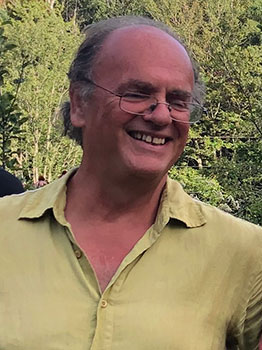
Andrew Granville
Université de Montréal
|
Current Events Bulletin Session - Lecture I
This lecture is supported by the Bose, Datta, Mukhopadhyay and Sarkar Fund, to bring appreciation for mathematics to a broader audience.
Missing digits, and good approximations
Friday January 6, 2023, 2:00 p.m.-3:00 p.m.
James Maynard has taken the analytic number theory world by storm in the last decade, proving several important yet fun theorems, resolving questions that had seemed far out of reach. He is perhaps best known for his work on small and large gaps between primes (which were discussed, hot off the press, in my 2014 CEB lecture). In this talk we discuss two other fantastic breakthroughs:
-- Mersenne numbers take the form $2^n-1$ and so appear as $111\dots 111$ in base 2, having no digit `$0$'. It is a famous conjecture that there are infinitely many such primes. More generally it was, until Maynard’s work, an open question as to whether there are infinitely many primes that miss any given digit, in any given base. We will discuss Maynard’s beautiful ideas that went into mostly resolving this question.
-- In 1926, Khinchin gave remarkable if and only if conditions for when real numbers can usually be “well approximated” by infinitely many rationals. However, Khinchin’s theorem regarded 1/2, 2/4, 3/6 as distinct rationals and so in 1941 Duffin and Schaefer proposed an appropriate analogy involving approximation by reduced fractions (which is much more useful). This simple reformulation has proven to be much more difficult though was recently resolved by Maynard together with Dimitris Koukoulopoulos, as we will discuss in this talk.
|
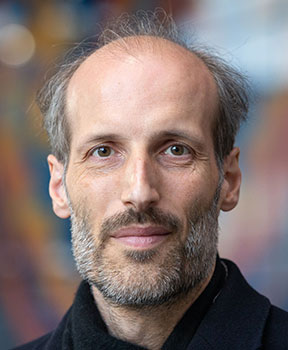
Martin Hairer
Imperial College London
|
Current Events Bulletin Session - IV
A stroll around the critical Potts model
Friday January 6, 2023, 5:00 p.m.-6:00 p.m.
As a generalisation of both the Ising model and Bernoulli percolation, the Potts model is a natural playground for exploring critical phenomena in statistical mechanics models. However, while it has been quite well understood from a heuristic, theoretical physics, perspective for quite some time, many of the corresponding mathematical conjectures had resisted any proof attempts. Over the past two decades, Duminil-Copin and his collaborators have completely transformed this state of affairs. We will convey some of the intuition about the behaviour of these models and survey some of the mathematical tools that played a role in their analysis.
|
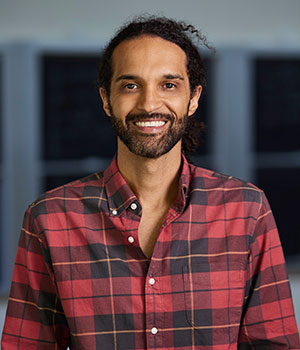
Ryan Hynd
University of Pennsylvania
|
NAM Claytor-Woodard Lecture
The Blaschke–Lebesgue theorem revisited
Thursday January 5, 2023, 2:40 p.m.-3:30 p.m.
A curve of constant width has the property that any two parallel supporting lines are the same distance apart in all directions. It turns out that a circle encloses the most area and a Reuleaux triangle encloses the least area among all curves of a given width. The latter fact was proved independently by Blaschke and Lebesgue. We will discuss this theorem and what is thought to be true for the analogous shapes in three-dimensions.
|
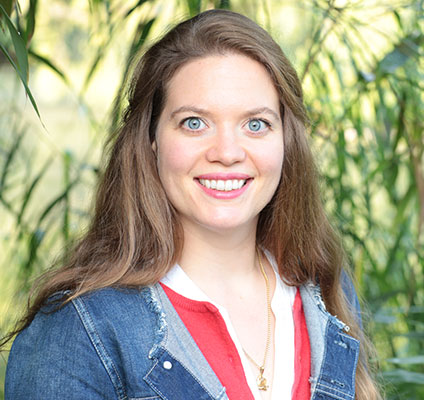
Franziska Jahnke
University of Münster
|
ASL Invited Address
Model theory of perfectoid fields
Friday January 6, 2023, 10:00 a.m.-10:50 a.m.
Tilting perfectoid fields, developed by Scholze, allows to transfer results between certain henselian fields of mixed characteristic and their positive characteristic counterparts and vice versa. We present a model-theoretic approach to tilting via ultraproducts, which allows to transfer many first-order properties between a perfectoid field and its tilt (and conversely). In particular, our method yields a simple proof of the Fontaine-Wintenberger Theorem which states that the absolute Galois group of a perfectoid field and its tilt are canonically isomorphic. This is joint work with Konstantinos Kartas.
|
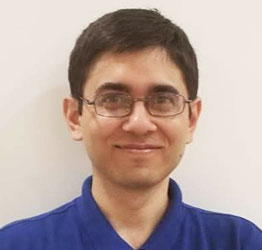
Apoorva Khare
Indian Institute of Science
|
ILAS Invited Address
Analysis applications of Schur polynomials
Wednesday January 4, 2023, 9:00 a.m.-9:50 a.m.
We explain recent results involving Schur polynomials - viewed as functions on the positive orthant - which have led to progress along several classical directions of study:
(1) Understanding functions that preserve positive semidefiniteness when applied entrywise to matrices. This journey takes us from work of Schur, Schoenberg, Rudin, and Loewner (1900s) to modern-day results.
(2) The proofs of these recent results lead to characterizing (weak) majorization of real tuples using Schur polynomials; this has since been generalized to all Weyl groups. Majorization inequalities have been studied since Maclaurin and Newton (1700s).
(3) We also explain how all Schur polynomials are lurking within each smooth function, by completing a 1960s determinantal computation of Loewner. This helps extend determinantal identities by Cauchy and Frobenius (1800s) involving one or two geometric series, to all power series, over all unital commutative rings.
(Partly based on joint works with Alexander Belton, Dominique Guillot, Mihai Putinar, and with Terence Tao.)
|
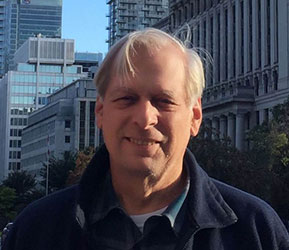
Stephen Kudla
University of Toronto
|
AIM Alexanderson Award Lecture
Modularity of generating series of divisors on unitary Shimura varieties
Friday January 6, 2023, 11:00 a.m.-11:50 a.m.
Unitary Shimura varieties are associated to hermitian vector spaces $V$ of signature $(n-1,1)$ over an imaginary quadratic field $\mathbf k$. The complex points $\mathrm S$ of such varieties are described as quotients of the unit ball in $\mathbb C^{n-1}$ by arithmetic groups $\Gamma$ in the isometry group $U(V)$. Special divisors arise as the images of `rational' sub-balls of dimension $n-2$. It has been known for a long time that the generating series for the cohomology classes in $\mathrm H^2(\mathrm S)$ of certain collections of such divisors, a formal power series in a parameter $\mathbf q$, is the $\mathbf q$-expansion of a modular form of weight $n$ valued in $\mathrm H^2(\mathrm S)$. These unitary Shimura varieties have (compactified) integral models $\mathcal S^*$ over the ring of integers $\mathrm O_\mathbf k$ of $\mathbf k$ and the special divisors can be extended to these models.
Equipped with suitable Green functions, the integral special divisors define classes in the arithmetic Chow group $\text{Ch}^{1}_{\mathbb Q}(\mathcal S^*)$. Our main result is a proof of the modularity of the resulting arithmetic Chow group valued generating series. The lecture will describe this construction in more detail and explain some of the techniques involved in the proof. If time permits, some consequences of modularity will be mentioned.
|
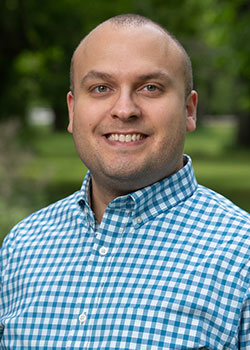
Luis Leyva
Vanderbilt-Peabody College
|
Spectra Lavender Lecture
Undergraduate mathematics education as a white, cisheteropatriarchal space and opportunities for structural disruption to advance queer of color justice
Wednesday January 4, 2023, 10:00 a.m.-10:50 a.m.
This lecture consists of two parts. For the first half of the lecture, I present findings from my research about the educational experiences of 39 undergraduate queer and trans* (QT) students of color pursuing STEM majors across historically white and minority-serving universities in the United States. Findings depict how Black, Latin*, and Asian QT students’ narratives of experience reflect forms of intersectionality, or instances of oppression and resistance at intersecting systems of white supremacy and cisheteropatriarchy (or white cisheteropatriarchy). I use my analytical framework, “STEM Education as a White, Cisheteropatriarchal Space” (Leyva et al., 2022, American Educational Research Journal), to capture how intersectional oppression among QT students of color unfolds across three interconnected levels of influence in undergraduate STEM: ideological, institutional, and relational. In addition, I highlight findings that illustrate structural disruptions, defined as educational structures and practices that resist intersectional oppression in undergraduate STEM. Findings also address coping strategies among QT students of color navigating white cisheteropatriarchy in STEM for protecting their academic success and intersectional identities. During the second half of the lecture, I apply my framework and research findings to argue how undergraduate mathematics education operates as a white, cisheteropatriarchal space that limits learning opportunities affirming of queer of color identities and experiences. I conclude by re-imagining undergraduate mathematics education with structural disruptions that advance justice for learners marginalized across intersections of race, gender, and sexuality. This re-imagining accounts for ideological, institutional, and relational forms of disruption that interrogate dominant forms of knowledge production as well as expand access to learning opportunities and departmental support that affirm queer of color identities.
|
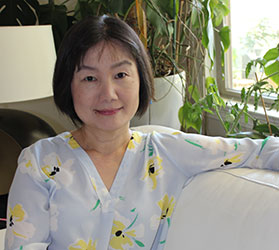
Ling Long
Louisiana State University
|
AMS Maryam Mirzakhani Lecture
A stroll in the garden of hypergeometric functions
Thursday January 5, 2023, 9:00 a.m.-9:50 a.m.
Hypergeometric functions, an important class of special functions in mathematics and physics, satisfy a lot of symmetries. Their finite field analogues are useful for counting points on certain algebraic varieties. Intricately linked by group actions in the background, these two kinds of hypergeometric functions enjoy similar properties. This opens up various connections to other fields, and provides a fertile ground for exploration.
In this talk, we aim to showcase how to Tile a Ball, Measure a Pie, and Dissect an Onion while strolling in the garden of hypergeometric functions.
|
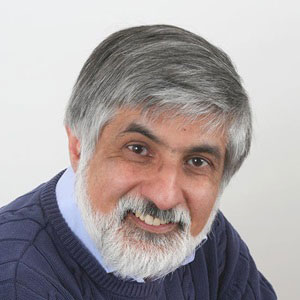
Philip Maini
University of Oxford
|
AAAS-AMS Invited Address
Are we there yet? Modelling collective cell motion in biology and medicine
Friday January 6, 2023, 11:00 a.m.-12:00 p.m.
Collective cell motion is ubiquitous in biology, occurring in development, repair and disease. I will review work that we have carried out over the past decade in collaboration with experimental colleagues in which we have used a multiscale, hybrid cellular automaton model to unearth new insights into the mechanisms underpinning the collective migration of neural crest cells during embryonic development. I will then investigate cell invasion in cancer, which leads to coupled systems of nonlinear partial differential equation models with degenerate cross-diffusion.
Travelling wave analysis of a simplified version of these models leads to new types of behaviour and many open questions.
|
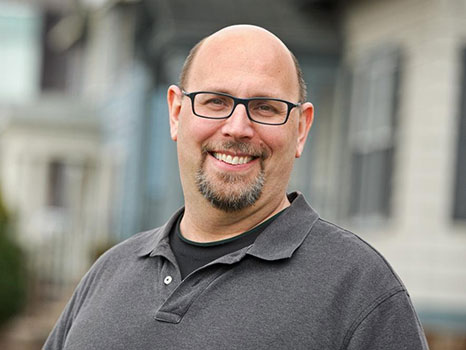
Russell Marcus
Hamilton College
|
SIGMAA on the Philosophy of Mathematics Guest Speaker
A philosophical account of mathematics that won’t make you hate philosophers
Friday January 6, 2023, 6:00 p.m.-7:30 p.m.
It is commonly believed that our best ways of knowing about anything require sense experience. Mathematics, as our most secure and conclusive knowledge, seems to eschew sense experience. Thus, we should either revise our views about how we know or revise our confidence in mathematics. Revising our views about how we know (our epistemology) in ways that accommodate a natural objectivity in mathematics, especially by appealing to intuition, seems problematic. I show how to invoke intuition in mathematical epistemology unproblematically, and thus that we need not impugn our confidence in mathematics. I start by describing objectivity about mathematics as a constraint on a satisfying epistemology. Then, I characterize and defend a version of intuition that I call thin. Lastly, I present an epistemology for mathematics, called autonomy platonism, that should be satisfying for both mathematicians and philosophers.
|

Sandra Müller
Technical University of Vienna
|
ASL Invited Address
Universally Baire sets, determinacy and inner models
Saturday January 7, 2023, 9:00 a.m.-9:50 a.m.
Computing the large cardinal strength of a given statement is one of the key research directions in set theory. Fruitful tools to tackle such questions are given by inner model theory. The study of inner models was initiated by G\"odel's analysis of the constructible universe $L$. Later, it was extended to canonical inner models with large cardinals, e.g., measurable cardinals, strong cardinals or Woodin cardinals, which were introduced and studied by Jensen, Mitchell, Steel, Woodin, Sargsyan, and others. We will outline the role universally Baire sets play in the study of inner models and their connections to determinacy axioms. In particular, we will discuss recent results on $\mathsf{Sealing}$, a formalization due to Woodin of the statement that the theory of the universally Baire sets cannot be changed by forcing.
|
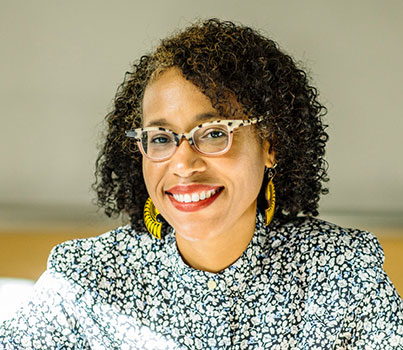
Omayra Ortega
Sonoma State University
|
MAA-SIAM-AMS Hrabowski-Gates-Tapia-McBay Lecture
Who are we serving with our scholarship: A Covid model case study
Friday January 6, 2023, 9:00 a.m.-9:50 a.m.
Academic institutions use the number of publications as a measure of competency. Why are publications in peer-reviewed journals one of the most important measures of success in our field? I will give examples of ways to use your research, regardless of the field, in service to your students, your institution, and your community using the example of recent student work in Covid modeling.
|

Mason Porter
University of California, Los Angeles
|
SIAM Invited Address*
Bounded-confidence models of opinion dynamics on networks
Thursday January 5, 2023, 11:10 a.m.-12:00 p.m.
I will discuss the modeling of opinion dynamics on various types of networks. I will start by introducing some general questions and ideas in the modeling of social dynamics. I will then focus on bounded-confidence models (BCMs), in which nodes have continuous-valued opinions and update those opinions when they interact with nodes with sufficiently similar opinions. I will discuss various generalizations of BCMs and examine how they affect consensus, polarization, and fragmentation of opinions in BCMs.
*Mariel Vazquez was originally scheduled to deliver the 2023 SIAM Invited Address but unavoidable circumstances have forced her to postpone her talk.
|
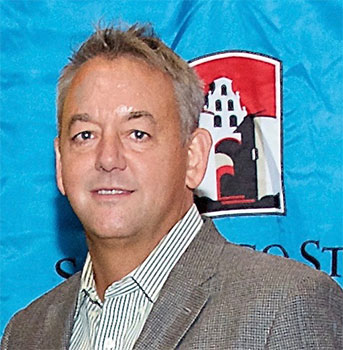
Chris Rasmussen
Center for Research in Math and Science Education
|
AMS Lecture on Education
Three models of successful department change approaches for infusing active learning in introductory mathematics courses
Saturday January 7, 2023, 11:10 a.m.-12:00 p.m.
Changing department norms and practices so that active learning is the new normal in how precalculus and calculus is taught is notoriously difficult, despite the strong evidence that such instructional approaches are more likely to support student success. In this presentation I report on three different approaches or models for implementing and sustaining active learning in core introductory mathematics courses for STEM-intending students. The three departments and their respective change strategies are all partners in the longitudinal NSF-funded project, Student Engagement in Mathematics through an Institutional Network for Active Learning (SEMINAL). To set the background for the three different department change approaches, I describe the overall SEMINAL project that they are partners in and broader project’s approach to initiating and supporting departmental change. I then provide details on the three different change approaches and how local context, local expertise, and department culture shaped and informed their strategies. I conclude with some reflections on more general characteristics of successful change efforts.
|
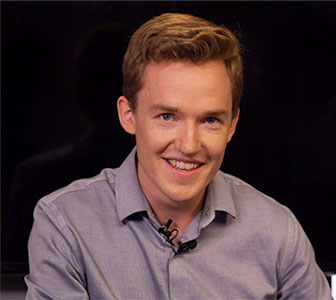
Grant Sanderson
3Blue1Brown
|
JPBM Communications Award Lecture
Raising the ceiling and lowering the floor of math exposition
Thursday January 5, 2023, 3:50 p.m.-4:50 p.m.
This talk will focus on online math exposition, highlighting lessons learned from successes and failures in developing the YouTube channel 3Blue1Brown.
Are there ways to lessen the tradeoffs between the depth of an explanation and its accessibility? What kinds of topics are effective at popularizing the subject, and which ones fall flat?
|
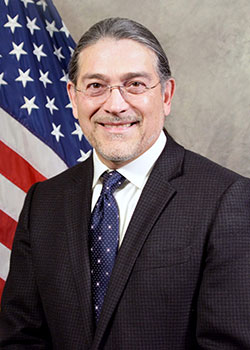
Rob Santos
Director, US Census Bureau
|
ASA Invited Lecture
At the Juncture of Mathematics, Statistics, Social Sciences and Society: the Census Bureau Use Case
Friday January 6, 2023, 8:00 a.m.-8:50 a.m.
The U.S. Census Bureau has existed for over a century and has endured through two global pandemics, two world wars as well as evolutions in society via industrial and technological advancement. While its principal function is that of fulfilling a constitutionally mandated decennial population census, its broader mission is to produce quality statistical data on the nation’s economy and its people. And it does so in vast quantities.
This is where a juncture manifests. Census Bureau data, and indeed corresponding published statistics, are used in myriad ways. They are used in governance (e.g., advancing democracy via apportionment), policy making and implementation, commerce, public health, and for basic research to understand who we are as a people and a nation, just to name a few categories. Data users – in their broadest sense to include everything from government sectors to local community organizations -- influence what data are captured as well as methods and sources of data. And, of course, science guides all we do because of our necessary commitment to scientific integrity. This is where mathematics, statistics and the social sciences enter the juncture. And finally, there is our societal renaissance in technology, culture and communication. Societal evolution is leading us to reexamine historically stable measures of critical importance to our nation, such as employment, monthly income, and even race and ethnicity. There is also a change in societal attitudes in towards privacy and trust in government that influences participation in surveys and censuses. All of this impacts the quality of the statistical data produced and methods and theory underpinning those data.
Indeed, the U.S. Census Bureau at the juncture of mathematics, statistics, the social sciences and society. And it does this as a nonpartisan federal statistical agency driven by core values of scientific integrity, objectivity, independence, and transparency. I will discuss a selection of current areas of Census Bureau work to illustrate how this juncture creates challenges. I’ll describe our approach to overcoming them in a way that simultaneously preserves our core values and serves the public. It’s an approach that relies not only on the best science (mathematical, statistical, social) available, but heavily leverages our core institutional values that now are strengthened using principles of diversity, equity and inclusion. I’ll close with thoughts on the challenges that lie ahead.
|
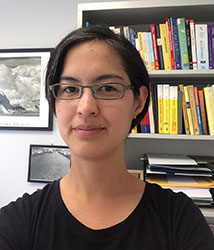
Lynn Scow
California State San Bernardino
|
ASL Invited Address
Semi-retractions and the Ramsey property
Friday January 6, 2023, 2:00 p.m.-2:50 p.m.
Say that an injection $f:\mathcal{A} \rightarrow \mathcal{B}$ is quantifier-free type-respecting if finite tuples from $\mathcal{A}$ that share the same quantifier-free type in $\mathcal{A}$ are mapped by $f$ to tuples in $\mathcal{B}$ that share the same quantifier-free type in $\mathcal{B}$. For structures $\mathcal{A}$ and $\mathcal{B}$ in possibly different languages we say that $\mathcal{A}$ is a semi-retract of $\mathcal{B}$} if there are quantifier-free type-respecting injections $g: \mathcal{A} \rightarrow \mathcal{B}$ and $f: \mathcal{B} \rightarrow \mathcal{A}$ such that $f \circ g : \mathcal{A} \rightarrow \mathcal{A}$ is an embedding. Given a finitely generated substructure $A \subseteq C$, define $\big(\begin{smallmatrix}C\\A\end{smallmatrix}\big)$ to be all substructures of $C$ isomorphic to $A$. We say that an age $\mathcal{K}$ of finite structures has the Ramsey property (RP) if for all $A, B \in \mathcal{K}$ and integers $k \geq 2$ there exists $C \in \mathcal{K}$ such that for any $k$-coloring $c : \big(\begin{smallmatrix}C\\A\end{smallmatrix}\big)\rightarrow k$, there is $B' \in \big(\begin{smallmatrix}C\\B\end{smallmatrix}\big)$ such that for any $A', A'' \in \big(\begin{smallmatrix}B'\\A\end{smallmatrix}\big)$, $c(A') = c(A'')$. In [1], it was shown that if $\mathcal{A}$ and $\mathcal{B}$ are locally finite ordered structures and $\mathcal{A}$ is a semi-retract of $\mathcal{B}$, then if the age of $\mathcal{B}$ has RP, the age of $\mathcal{A}$ has RP. In this talk we will present improvements on this result and comment on the connection to categorical notions in Ramsey theory.
[1] L. Scow, Ramsey transfer to semi-retractions, Annals of Pure and Applied Logic, vol. 172 (2021), no. 3, Paper no. 102891,18.
|
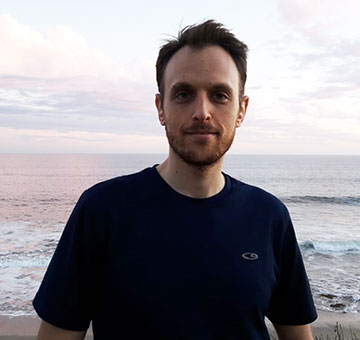
Assaf Shani
Harvard University
|
ASL Invited Address
Classifying invariants for Borel equivalence relations
Friday January 6, 2023, 1:00 p.m.-1:50 p.m.
A classification problem is a pair $(X,E)$ where $X$ is a collection of mathematical objects and $E$ is a natural notion of equivalence (such as isomorphism). The theory of Borel equivalence relations provides a precise way to measure the complexity of various classification problems, and to study what type of invariants may, or may not, be available to successfully classify them.
In this talk I will focus on a hierarchy of complexity of classifying invariants, which was introduced by Hjorth, Kechris and Louveau. After introducing the definitions and motivation, I will discuss its relevance in the study of natural classification problems, and some recent applications.
|
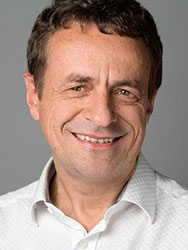
Bernd Sturmfels
University of California at Berkeley
|
MAA-AMS-SIAM Gerald and Judith Porter Public Lecture
The quadratic formula revisited
Saturday January 7, 2023, 3:00 p.m.-4:00 p.m.
High school students learn how to express the solution of a quadratic equation in one unknown in terms of its three coefficients. What does this this formula matter? We offer an answer in terms of discriminants and data. This lecture invites the audience to a journey towards non-linear algebra.
|
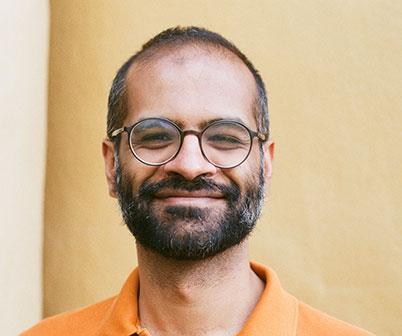
Nikhil Srivastava
University of California, Berkeley
|
AMS von Neumann Lecture
Four ways to diagonalize a matrix
Saturday January 7, 2023, 9:00 a.m.-9:50 a.m.
Despite its fundamental nature, the question of designing a provably efficient and correct algorithm for approximately diagonalizing a complex matrix remains unresolved. We survey various approaches to this question over the past five decades using tools from complex analysis, differential geometry, numerical analysis, random matrix theory, and dynamics, and report on some recent progress. A key ingredient in the proofs is the fact that a tiny random perturbation of any matrix behaves more or less like a normal matrix in a certain quantitative sense.
|
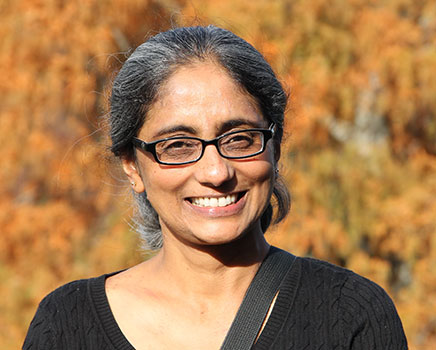
Rekha Thomas
University of Washington
|
AMS Invited Address
Ideals and varieties of the pinhole camera
Wednesday January 4, 2023, 10:05 a.m.-10:55 a.m.
Image formation in a pinhole camera is a foundational problem in computer vision. Based in classical projective geometry and inspired by paintings and photogrammetry, the first problems in this area date back to the 1800s. I will describe some of the main algebro-geometric objects that arise in the study of pinhole cameras and what we can say about them.
|
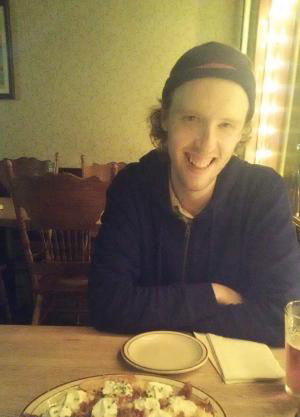
Erik Walsberg
University of California Irvine
|
ASL Invited Address
Model theory of large fields
Saturday January 7, 2023, 1:00 p.m.-1:50 p.m.
In the words of Pop, large fields are ``the right class of fields over which one can do a lot of interesting mathematics''. All known infinite fields with well behaved first order theories are large, and the main examples of logically wild fields (number fields and function fields) are the main examples of non-large infinite fields. This suggests that largeness should have a central place in the model theory of fields. I have begun to explore the \'etale open topology in recent joint work with (various subsets of) Minh Chieu Tran, Jinhe Ye, Will Johnson, Anand Pillay, Sylvy Anscombe, and Philip Dittmann. This topology is defined on the $K$-points of a $K$-variety (so in particular is defined on $K^n$ for each $n$). This topology is nontrivial iff $K$ is large. When $K$ is algebraically, real, $p$-adically closed the \'etale open topology agrees with the Zariski, order, $p$-adic topology, respectively. We get an entirely novel topology over other large fields such as psuedofinite fields. The \'etale open topology provides a useful tool for handling definable sets in large fields, for example it guided us towards a proof of the large case of the stable fields conjecture. I will discuss this subject, assuming minimal background in algebra and algebraic geometry.
|
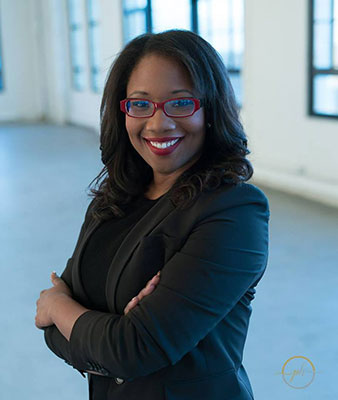
Talithia Williams
Harvey Mudd College
|
JPBM Communications Award Lecture (2022 Recipient)
The power of talk: engaging the public in mathematics
Saturday January 7, 2023, 1:00 p.m.-2:00 p.m.
When it comes to inspiring the future productivity and innovation of our nation, mathematicians are the on the front lines. In this talk, I will discuss the importance of engaging a wide range of audiences in conversations about the nature of our work and of scientific discovery. As we change the way readers, viewers, and audience members think about the natural world and the STEM disciplines, we can begin conversations that improve public perception of science and bring people from all backgrounds into this important work.
|




